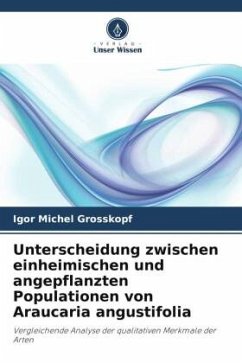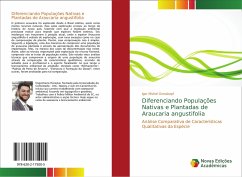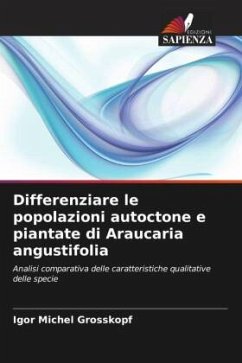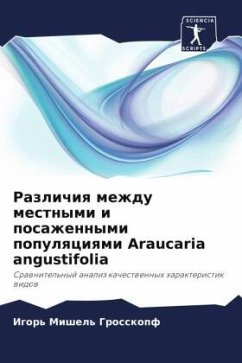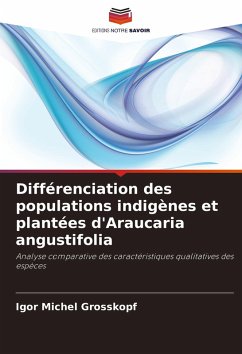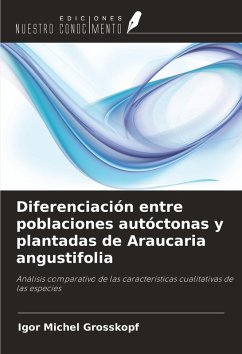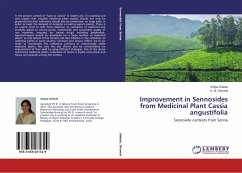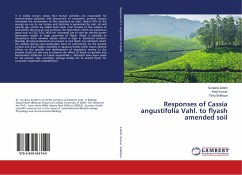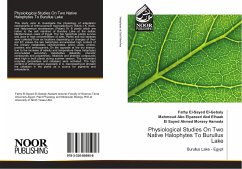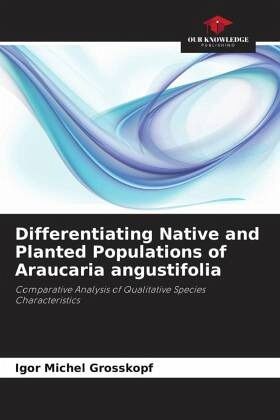
Differentiating Native and Planted Populations of Araucaria angustifolia
Comparative Analysis of Qualitative Species Characteristics
Versandkostenfrei!
Versandfertig in 6-10 Tagen
24,99 €
inkl. MwSt.

PAYBACK Punkte
12 °P sammeln!
The Araucaria pine has been exploited since colonial Brazil, as have many natural resources. This vast exploitation has grown throughout our country's history, and environmental legislation has had to evolve to prevent species from becoming extinct. These changes have brought us to the current position, where the Araucaria angustifolia species is prohibited from exploitation, with rare exceptions such as in the case of proof of planting. However, this proof is not simple. According to the legislation, one of the ways of proving a planted Araucaria population is by presenting the implementation...
The Araucaria pine has been exploited since colonial Brazil, as have many natural resources. This vast exploitation has grown throughout our country's history, and environmental legislation has had to evolve to prevent species from becoming extinct. These changes have brought us to the current position, where the Araucaria angustifolia species is prohibited from exploitation, with rare exceptions such as in the case of proof of planting. However, this proof is not simple. According to the legislation, one of the ways of proving a planted Araucaria population is by presenting the implementation documents. However, in most cases there is no such documentation. It is therefore up to the technician responsible for exploiting the forest resource to prove that it is not a native population. The aim of this study was to analyze techniques that prove the origin of an Araucaria population by comparing qualitative characteristics, serving as a subsidy for professionals and inspectors when it comes to environmental licensing. Variables such as "Alignment", "Tree Size Pattern", "Canopy Structure and Formation", among others, were analyzed for this comparison.



